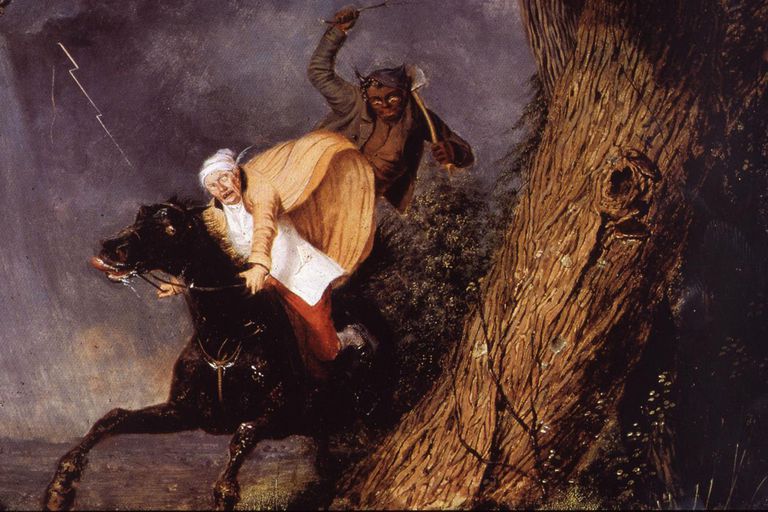The Devil and Tom Walker – Analysis
Washington Irving is an author who lived in the USA in the 18-19th centuries. He became internationally famous thanks to his short stories. Washington Irving’s writing style uses skepticism and irony as the key features of his story we are going to discuss today, namely, The Devil and Tom Walker.
Washington Irving is trying to warn American citizens against such sins as greed and corruption which are embodied in the main character. His cooperation with the personified devil is designed to show what the wealth gained unjustly can result in and how it influences its owner. If you want to enhance your knowledge on the topic, take a look at Devil and Tom Walker SparkNotes to learn about the mystery of this short story by Washington Irving.
The Characters
The list of characters in the piece is quite short. It includes:
– Tom Walker
– Tom Walker’s wife
– Old Scratch
The protagonist, Tom Walker, is put in the center of the reader’s attention. His personality doesn’t evoke any sympathy or compassion as he appears to be a miserable man who is ready to give away his soul for an opportunity of becoming rich during his lifetime.
Tom’s figure is stereotypical and unsophisticated as it serves to highlight only Tom’s greed. However, the author attempts to make the plot more realistic by Tom’s regret in the end.
Tom Walker has a wife with a temper worse than his, who is also eager for money. The author doesn’t give her a name endowing with the same one-dimensional personality. She often is abusive toward Tom, not only verbally but even physically.
Old Scratch is the one who is offering Tom to make a deal. He is described as a strange man having a black face. Old Scratch is living near the swamp that symbolizes immorality of the society.
Unlike the two previous characters, this one possesses supernatural powers, but he behaves like a regular person. He talks to people and interacts with the main characters. His supernatural power consists in an ability to make Tom rich by giving him the fortune of Captain Kidd who has hidden his wealth before the death.
Money seems to be a separate character that has the power to rule people’s lives. Irving makes it an obstacle on the way to Walker’s happiness and evil force that turns people into greedy and lonely creatures.
The Plot
The story’s beginning looks like a tale, telling about Captain Kidd, a pirate who earned a fortune and hid it in the swamp where Old Scratch is protecting it. Then, the readers are introduced to the Walkers, who are described as poor and greedy people.
Once, when Tom was walking near the swamp, he decided to take a rest. Suddenly, in front of him there appeared a strange man who asked to call him Old Scratch but, in fact, it was a devil who was trying to conceal his persona.
There begins a conversation between them, and the devil offers his companion a deal though what he gets in exchange is Tom’s soul.
Tom is in doubt and says that he needs to know his wife’s opinion. In fact, he doesn’t care about her, but he is hesitating whether to agree or not. When she finds out that Tom would rather reject the proposal, she decides to ask the devil to make a deal with her instead of her husband.
She takes all the valuables along and never returns back being taken away by the Devil. Tom is actually not disappointed as now he doesn’t need to share his future wealth with her.
After making a deal with the Devil, Tom becomes an usurer lending money to people. Though when he eventually gains the promised fortune, he begins to be afraid for his fate. Tom decides to find salvation in the church.
He has a Bible, but it is not helpful anymore. One morning, Old Scratch arrives on a black horse to Tom’s house to take away his soul.
Allegory, Symbolism and Moral of the Story
Irving’s story is strongly allegorical and full of symbols. The moral lesson which the author of The Devil and Tom Walker wants to communicate to the readers consists in warning them of greed and corruption that ruin а human soul.
Tom Walker’s and his wife’s characters are created to be unlikable. The author wants to cultivate an image of rich people who still cannot succeed, being fairly punished because of their greed.









